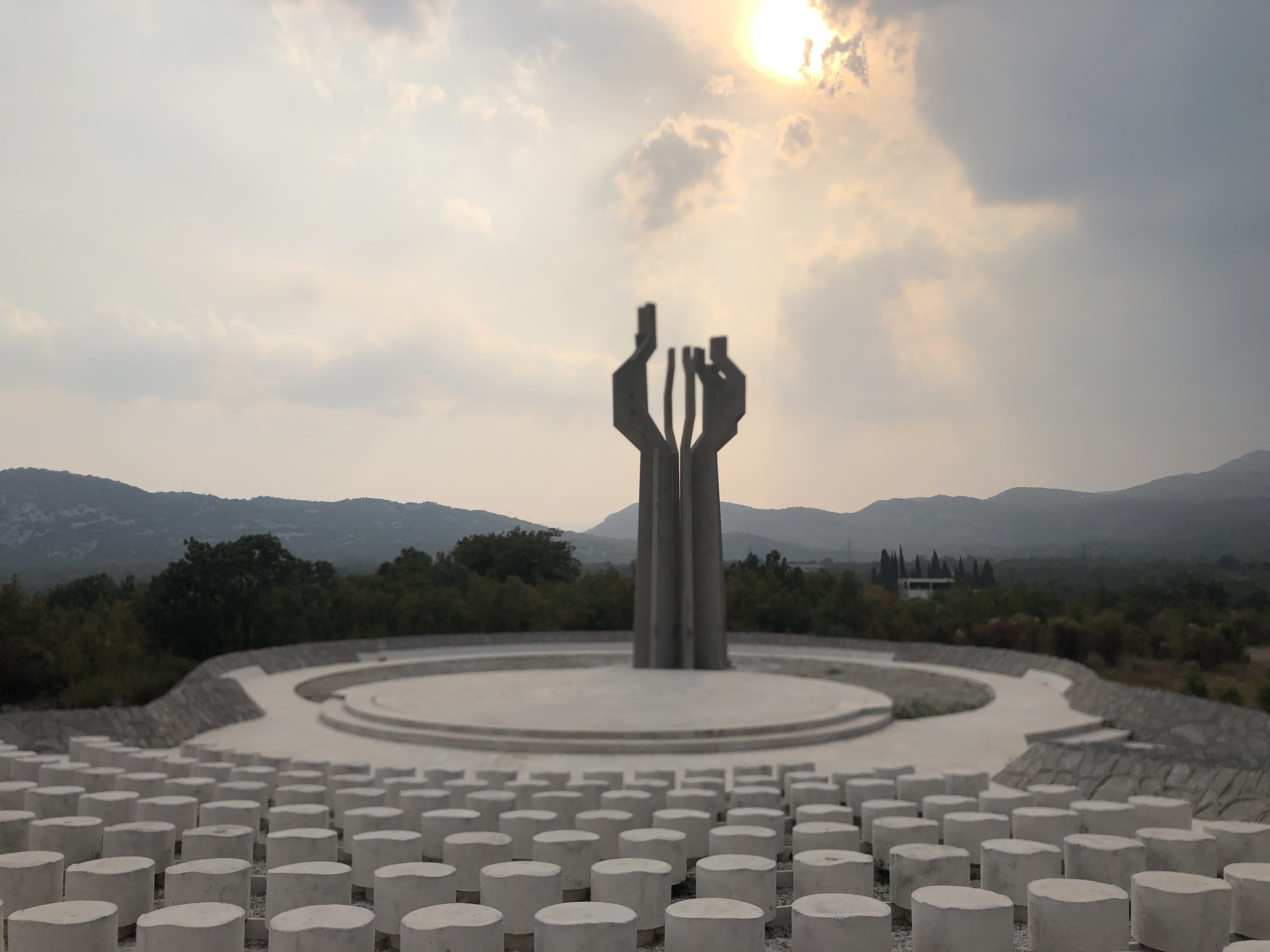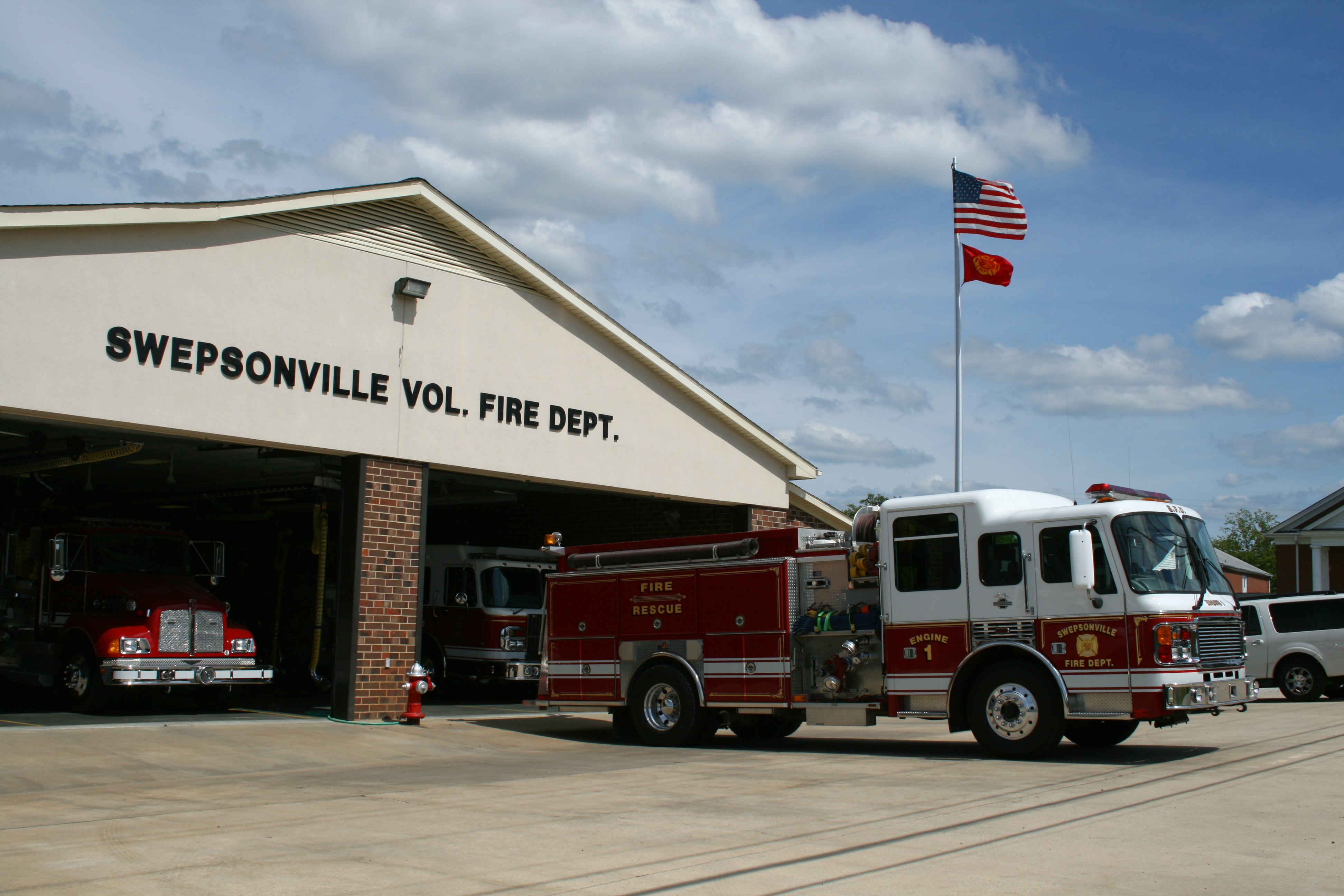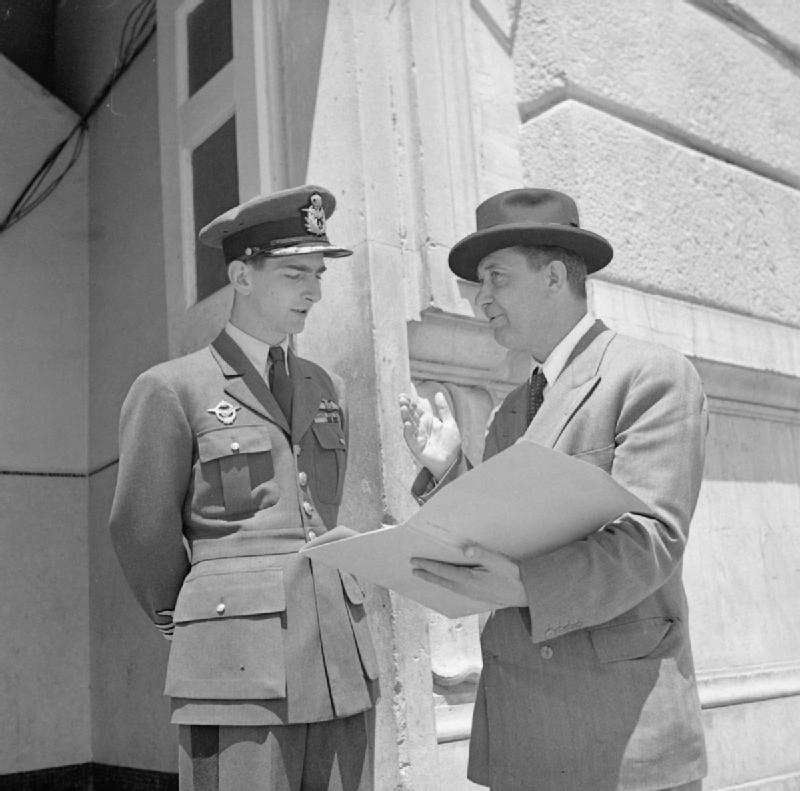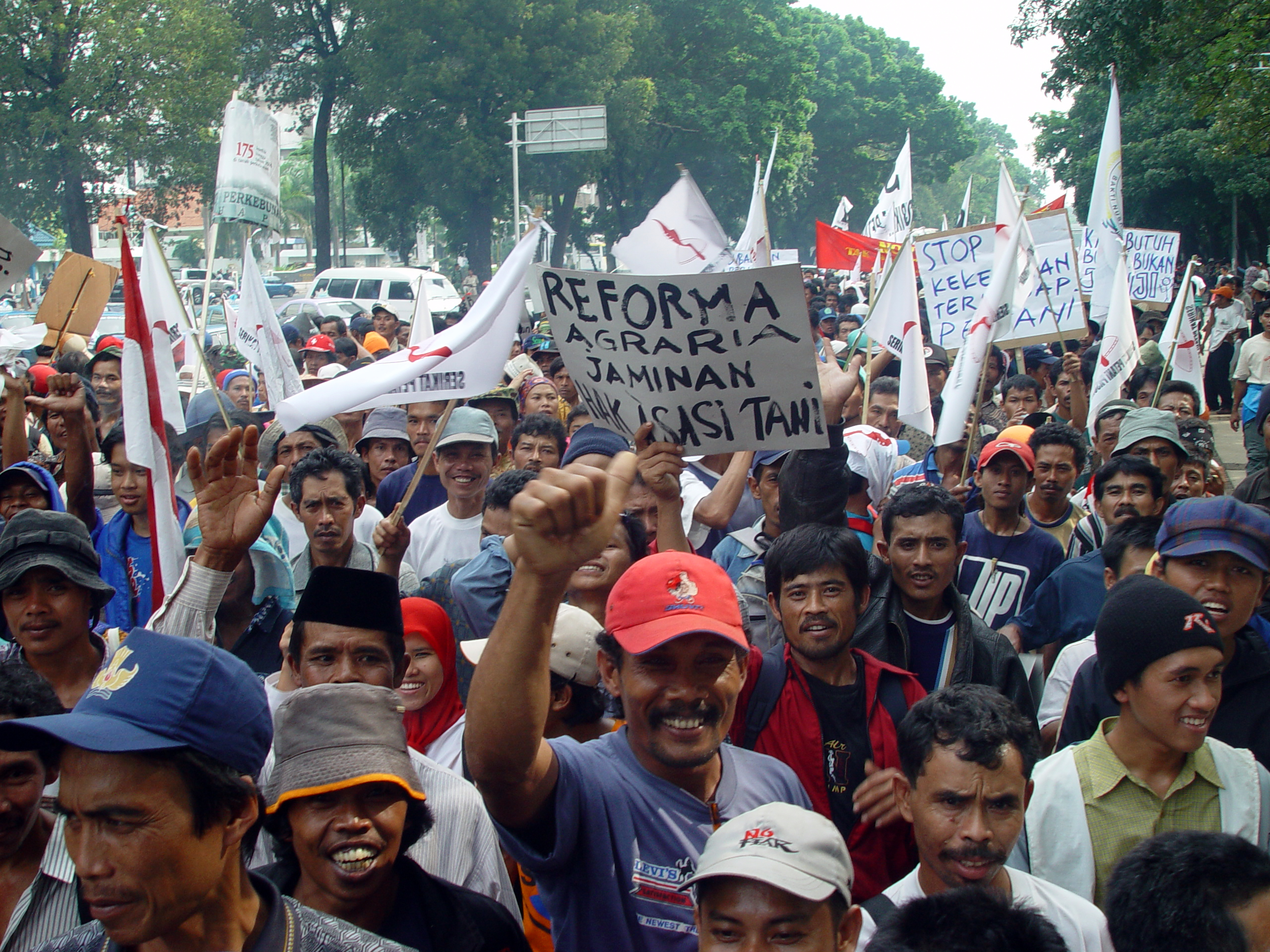|
Podhum, Croatia
Podhum is a village in Croatia. It is connected by the D52 highway. During World War II it was the site of the Podhum massacre of Croat civilians by Italian occupation forces; up to 118 people were killed and more than 800 were sent to Italian concentration camps, where many more also died in captivity. A large Spomenik monument in a park in Podhum now marks the place where Italian forces executed male villagers ranging in age from 16 to 60 years on July 14, 1942. The monument was designed by Croatian sculptor Šime Vulas (1932-2018). History A 22 December 1939 decision as part of agrarian reforms by Ban Šubašić to confiscate the forest property in Podhum and surroundings of the Thurn and Taxis family, Kálmán Ghyczy and Nikola Petrović resulted in a legal dispute known as the Thurn and Taxis Affair, in part because of the relative status of the family and in part because of the proximity to the Italian border. The morning of 5 November 2017, a fire burned down an old ... [...More Info...] [...Related Items...] OR: [Wikipedia] [Google] [Baidu] |
List Of Regions Of Croatia
Though the Croatia, Republic of Croatia administratively consists of counties of Croatia, twenty counties, it is traditionally divided into four historical region, historical and cultural area, cultural regions: Croatia proper, Dalmatia, Istria, and Slavonia. These are further divided into other, smaller regions. Historical regions Smaller regions *''Banovina (region), Banovina'' (or ''Banija)'' is a region in central Croatia, situated between the rivers Sava, Una (Sava), Una and Kupa River (Croatia), Kupa. *''Baranya (region), Baranja'' forms a small enclave between the region of Slavonia and the Republic of Hungary, it lies in the north east of Croatia. The rest of the region known as Baranja is located in Hungary. *Croatian Littoral (''Hrvatsko primorje''), the maritime region of Croatia proper *''Gorski kotar'' occupies the area between the major cities of Karlovac and Rijeka ( ''Fiume''). The regions main city is Delnice. The river Kupa River (Croatia), Kupa separates th ... [...More Info...] [...Related Items...] OR: [Wikipedia] [Google] [Baidu] |
Spomenik
The authorities of the Socialist Federal Republic of Yugoslavia established many World War II memorials during the country's existence. Several memorial sites were established between 1945 and 1960, though widespread building started after the founding of the Non-Aligned Movement. Yugoslav president Josip Broz Tito commissioned several memorial sites and monuments in the 1960s and 1970s dedicated to World War II battles, and Nazi concentration camp sites. They were designed by notable sculptors, including Dušan Džamonja, Vojin Bakić, Miodrag Živković, Jordan and Iskra Grabul, and architects, including Bogdan Bogdanović, Svetlana Kana Radević and Gradimir Medaković. After Tito's death, a small number were built, and the monuments were popular visitor attractions in the 1980s as patriotic sites, and since the Yugoslav Wars and the dissolution of Yugoslavia, the sites are mostly abandoned. In Slovenia, World War II Veteran Organisation and its branches yearly hold many comm ... [...More Info...] [...Related Items...] OR: [Wikipedia] [Google] [Baidu] |
Volunteer Fire Department
A volunteer fire department (VFD) is a fire department of volunteers who perform fire suppression and other related emergency services for a local jurisdiction. Volunteer and retained (on-call) firefighters are expected to be on call to respond to emergency calls for long periods of time, and are summoned to the fire station when their services are needed. They are also expected to attend other non-emergency duties as well (training, fundraising, equipment maintenance, etc.). Volunteer firefighters contrast with paid firefighters who work full or part-time and receive a salary. Some volunteer firefighters may be part of a combination fire department that employs both full-time and volunteer firefighters. On-call firefighters who receive some pay for their work are known as call firefighters in the United States, and retained firefighters in the United Kingdom and Ireland. International The earliest firefighting organizations were made up of volunteers. The first large ... [...More Info...] [...Related Items...] OR: [Wikipedia] [Google] [Baidu] |
Thurn And Taxis Affair
Thurn may refer to: * Thurn, Austria, a town near Lienz, Tyrol * Thurn Pass, an Alpine mountain pass in Austria * Thurn und Taxis The Princely House of Thurn and Taxis (, ) is a family of German nobility that is part of the ''Briefadel''. It was a key player in the mail, postal services in Europe during the 16th century, until the end of the Holy Roman Empire in 1806, and ..., a historical noble house See also * Turn (other) * Thurm * Thurnen (other) * {{disambig, geo, surname ... [...More Info...] [...Related Items...] OR: [Wikipedia] [Google] [Baidu] |
Kálmán Ghyczy
Kálmán Ghyczy de Ghicz, Assakürt et Ablánczkürt (12 February 1808 – 28 February 1888) was a Hungary, Hungarian politician, who served as Minister of Finance between 1874 and 1875. He became representative of Komárom County in 1843. During the Hungarian Revolution of 1848 he served as state secretary of the Ministry of Justice. After the defeat Ghyczy retired from the politics for a time. He was appointed Speaker of the House of Representatives in 1861. He didn't support the Austro-Hungarian Compromise of 1867, compromise with the Austrians. Later his views changed. Ghyczy founded a new party named the Central Party. He supported the case of the compromise since the left centre is a party with this practically came to an end with his secession. In 1874 he was appointed Minister of Finance, he was the only opposition member of the cabinet. He took over as Minister of Finance in a period when the budget struggled with chronic troubles. Economic optimism brought the country un ... [...More Info...] [...Related Items...] OR: [Wikipedia] [Google] [Baidu] |
Thurn And Taxis
The Princely House of Thurn and Taxis (, ) is a family of German nobility that is part of the '' Briefadel''. It was a key player in the postal services in Europe during the 16th century, until the end of the Holy Roman Empire in 1806, and became well known as the owner of breweries and commissioner of several castles. The family has resided in Regensburg since 1748 with their seat at St. Emmeram Castle from 1803. The family is one of the wealthiest in Germany, and the current head of the House is Albert, 12th Prince of Thurn and Taxis. They are one of the mediatised Houses for their former Sovereign Imperial counties, later mediatised to Kingdom of Württemberg ( Buchau Princely Abbey, now Bad Buchau), Kingdom of Bavaria and Hohenzollern-Sigmaringen. History The Tasso family (from the Italian word for "badger", the family's heraldic animal) was a Lombard family in the area of Bergamo. The earliest records place them in Almenno in the Val Brembana around 1200,Seras ... [...More Info...] [...Related Items...] OR: [Wikipedia] [Google] [Baidu] |
Ivan Šubašić
Ivan Šubašić (7 May 1892 – 22 March 1955) was a Croat politician, best known as the last Ban of Croatia and Prime Minister of the royalist Yugoslav Government in exile during the Second World War. Early life Ivan Šubašić was born in Vukova Gorica, a village along the Karlovac-Rijeka highway in Karlovac district, Croatia. He completed the first grades of elementary school in the neighboring Prilišće and his secondary education in Zagreb. His studies at the Faculty of Theology (the University of Zagreb ) were cut short, as he was drafted into the Austro-Hungarian Army. Captured on the Eastern Front, he subsequently joined the Yugoslav volunteers fighting at the Salonica. Once the war was over, Šubašić obtained his law degree at the Faculty of Law, University of Zagreb and opened his first law office in Vrbovsko, close to his birth place. After meeting Vladko Maček, he joined the Croatian Peasant Party and was elected to the Yugoslav National Assembly in 1938. Po ... [...More Info...] [...Related Items...] OR: [Wikipedia] [Google] [Baidu] |
Ban Of Croatia
Ban of Croatia () was the title of local rulers or office holders and after 1102, viceroys of Croatia. From the earliest periods of the Croatian state, some provinces were ruled by Ban (title), bans as a ruler's representative (viceroy) and supreme military commander. In the 18th century, Croatian bans eventually became the chief government officials in Croatia. They were at the head of the Ban's Government, effectively the first prime ministers of Croatia. The institution of ban persisted until the first half of the 20th century, when it was officially superseded in function by that of a parliamentary prime minister. Origin of title South Slavic ''ban'' (, with a long ), is directly attested in 10th-century Constantine VII, Constantine Porphyrogenitus' book ''De Administrando Imperio'' as ', in a chapter dedicated to Croats and the organization of their state, describing how their ban "has under his rule Krbava, Lika and Gacka." Bans during the Trpimirović dynasty Refere ... [...More Info...] [...Related Items...] OR: [Wikipedia] [Google] [Baidu] |
Agrarian Reforms
Land reform (also known as agrarian reform) involves the changing of laws, regulations, or customs regarding land ownership, land use, and land transfers. The reforms may be initiated by governments, by interested groups, or by revolution. Land reform is often considered a contentious process, as land is a key driver of a wide range of social, political and economic outcomes. The structure and distribution of land rights has been linked to state formation, economic growth, inequality, political violence, and identity politics, making land reform highly consequential for the long-term structures of society. Overview Land reform may consist of a government-initiated or government-backed property redistribution, generally of agricultural land. Land reform can, therefore, refer to transfer of ownership from the more powerful to the less powerful, such as from a relatively small number of wealthy or noble owners with extensive land holdings (e.g., plantations, large ranches, or a ... [...More Info...] [...Related Items...] OR: [Wikipedia] [Google] [Baidu] |
Podhum Massacre
The Podhum massacre was the mass murder of Croat civilians by Italian occupation forces on 12 July 1942, in the village of Podhum, in retaliation for an earlier Partisan attack. Background Axis forces, including Italy, invaded and defeated the Kingdom of Yugoslavia in April 1941. Following its defeat, various Yugoslav territories were occupied and annexed by the Axis powers; Mussolini's Italy gained most of Slovenia, Kosovo, coastal and inland areas of the Croatian Littoral and large chunks of the coastal Dalmatia region (along with nearly all of the Adriatic islands and the Bay of Kotor). It also gained control over the Italian governorate of Montenegro, and was granted the kingship in the Independent State of Croatia, though wielding little real power within it; although it did (alongside Germany) maintain a ''de facto'' zone of influence within the borders of the NDH. Resistance, led primarily by the Yugoslav Partisans, began almost immediately, with the formation of the ... [...More Info...] [...Related Items...] OR: [Wikipedia] [Google] [Baidu] |
List Of Counties Of Croatia
The counties of Croatia () are the first-level administrative subdivisions of the Republic of Croatia. Since they were re-established in 1992, Croatia has been divided into 20 counties and the capital city of Zagreb, which has the authority and legal status of both a county and a city (separate from the surrounding Zagreb County). As of 2015, the counties are subdivided into 128 cities and 428 (mostly rural) municipalities. The divisions have changed over time since the medieval Croatian state. They reflected territorial losses and expansions; changes in the political status of Dalmatia, Dubrovnik and Istria; and political circumstances, including the personal union and subsequent development of relations between the Kingdom of Croatia-Slavonia and the Kingdom of Hungary. Government County assembly () is a representative and deliberative body in each county. Assembly members are elected for a four-year term by popular vote ( proportional system with closed lists and d'H ... [...More Info...] [...Related Items...] OR: [Wikipedia] [Google] [Baidu] |
World War II
World War II or the Second World War (1 September 1939 – 2 September 1945) was a World war, global conflict between two coalitions: the Allies of World War II, Allies and the Axis powers. World War II by country, Nearly all of the world's countries participated, with many nations mobilising all resources in pursuit of total war. Tanks in World War II, Tanks and Air warfare of World War II, aircraft played major roles, enabling the strategic bombing of cities and delivery of the Atomic bombings of Hiroshima and Nagasaki, first and only nuclear weapons ever used in war. World War II is the List of wars by death toll, deadliest conflict in history, causing World War II casualties, the death of 70 to 85 million people, more than half of whom were civilians. Millions died in genocides, including the Holocaust, and by massacres, starvation, and disease. After the Allied victory, Allied-occupied Germany, Germany, Allied-occupied Austria, Austria, Occupation of Japan, Japan, a ... [...More Info...] [...Related Items...] OR: [Wikipedia] [Google] [Baidu] |





